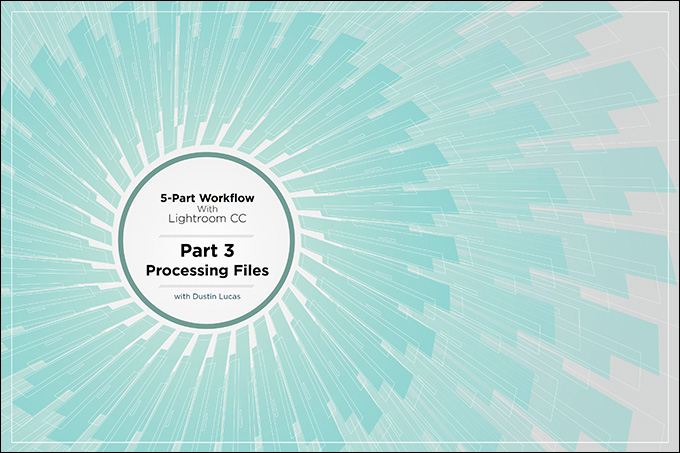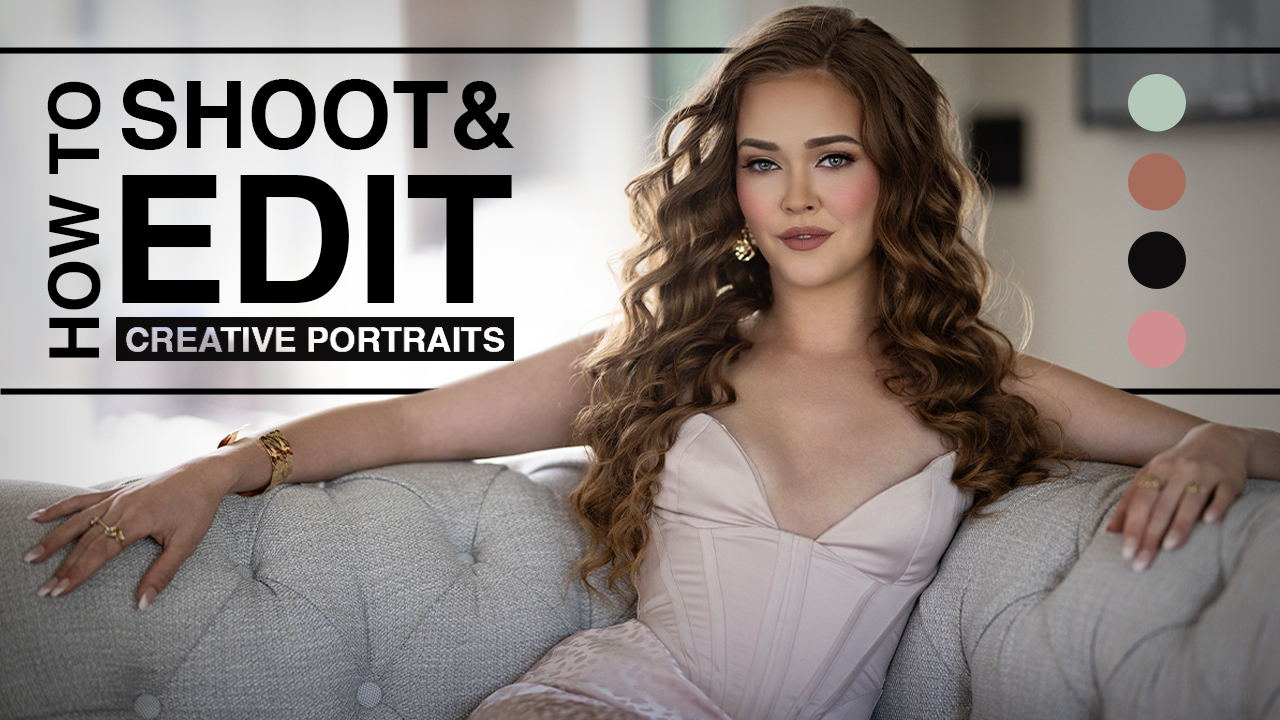5-Part Workflow With Lightroom CC Part 3: Processing Files with Dustin Lucas
After the shoot is done, files are stored and backed up, catalog and previews rendered, it’s finally time to process all those files. Get comfortable now. Lightroom CC has made many of our lives easier with the intuitive hotkeys, ease of cycling between images and syncing adjustments. I have to be honest, though: No matter how fast you are at culling and editing in Lightroom, getting 5,300 images down to under 1,000 is rough. I’ve done it five days a week for years, and I still push myself to increase efficiency and quality.
I don’t want to compare culling in other programs or batched styles of editing in this article. I am a Lightroom guy, and I am sticking with it. Working with Evolve, I have seen various workflows and mechanics from hundreds of professional photographers. I learn as much from them as they do from me. You have to trade secrets in this industry. That’s what I am here to do.
Library Module
This module can be accessed by striking the “G” key. I refer to it as the grid mode because I usually have the images displayed this way. In this view mode, you have the ability to filter the previews by text, attributes and metadata. If these filters aren’t visible, strike the backslash (“\”) key. These options become more useful for culling and editing your images once we get there. From the menu bar, choose View > View Options, or hit CMD + J to adjust the details for each preview cell. I prefer to see the file name, attributes and badges. To quickly remove this data, hit Shift + CMD + H.
The more useful view mode for selection is loupe mode. These view options can be adjusted in the next tab within the View Options dialog box. I prefer to keep the camera info visible. For viewing individual images, I find that leaving the side panels and film strip visible is very distracting; plus, the image needs to be larger. To drop the side panels, hit the Tab key; to remove all three panels, hit Shift + Tab. You will notice when your cursor scrolls over these panels that they automatically appear. To keep this from happening, right-click next to the arrow and choose Manual. You have total control over the panels with the Shift and Tab keys.
Selection Process
Using attributes is essential when selecting images. These attributes include flags, color labels and star ratings. Hotkeys bring a new level of efficiency for going through thousands of images. Add a flag to an image by selecting the “P” key. Reject images by selecting the “X” key. To unflag an image, strike the “U” key to reset it.
Color labels are much simpler to add by using the number keys 6 through 9. The color tags ascend by striking 6 for red, 7 for yellow, 8 for green and 9 for blue. Hitting these same keys again removes the attribute. Lightroom even allows you to customize this feature: From the menu bar, select Metadata > Color Label Set > Edit. You can rename what keyword the color labels are referred to as. For example, I changed the green label to Samples, yellow to Revised, green to Deluxe edit, blue to Premium edit and purple to Signature edit. Then click in the presets drop-down menu to save the current settings as a new preset. In order to see these keywords, make sure labels are a column for metadata filters.
Star ratings are a great tool for adding levels of importance when selecting. Number keys 1 through 5 add stars, and 0 removes ratings. You can also use the “[“ to increase and ”]” option to decrease ratings. My normal process is to select images worth delivering to the client in 3 stars, then select impact images to edit with 5 stars. This averages a total delivery of 1,600 digital negatives, with 800 of those as color-corrected proofs.
Moving into selection, mechanics can be the difference between culling through 2,000 images in an hour and taking way longer than needed. Following Sal’s workflow and developing some tricks along the way has gotten me to that one-hour mark for 2,000 images. I start in grid mode by filtering the images by camera serial number. Assuming most images taken are by the principal shooter, I begin there. Using different sort-by modes becomes important when viewing all the images together, but for a single camera, it can remain on Capture time. Double-click the first image and remove the surrounding panels using Shift + Tab. Then hit the “l” key twice to isolate the image. I want the least number of distractions in my selection process. I put my headphones on and go to town.
Once in the isolated loupe mode, I use the arrow pad to cycle through images quickly. Images load quickly because the Previews have already been rendered. Check out my previous article “5-Part Workflow With Lightroom CC Part 2: Catalog Management” for more on this. To apply a flag, strike CMD + Up Arrow; to remove it, hit CMD + Down Arrow. To reject it as an unusable image, strike CMD + Down Arrow again. I recommend using the least complicated method to reduce thinking about how to select, and just hit the correct key. Flags are very simple, but so is hitting the 6 key to add or remove the red label. You just need to apply an attribute to create a selection.
Develop Module
Once you’ve selected the images and applied the attribute filter, let’s start the editing process. Normally I apply a preset in grid mode to shift the images slightly from SOOC. This is my first step in editing. My article “Efficiency With Lightroom Presets” talks about creating and using these.
There are a couple of options for editing at this point. If you have adjusted capture times appropriately, we can edit all the images together. This is more time-consuming but ensures a once-over consistency. Another option is the “divide and conquer” method. There are many ways to divide or filter your images, but the popular way is based on camera serial number. You can go as far as filtering by lens as well. For now, I will filter by camera serial number.
I move into the Develop module by striking the “D” key. I am only interested in the History panel on the left hand side. This is the only panel I have dropped down during the second step of the editing process. I also strike the “Y” key to bring up my before-and-after preview mode. It helps to edit side by side with your SOOC to see how far to process it. At a second-step editing level, do not get stuck in the little details. You need to create consistency, not a stylistic or print-ready image. Think of second-step edits as proofs for a preview.
Editing Process
I begin by dropping down the Basic and Camera Calibration panels. Adjusting your camera profile is significant at this stage; if you don’t have a clue as to what I am talking about, read my article “Color Space Part 2: Getting Control With Your Color.” You need to change from Adobe Standard, especially if you have created a custom profile for your camera. After you have adjusted this, let’s move into the Basic panel and make adjustments to white balance, brightness and tonality.
First, I adjust the exposure to balance the brightness on the skin. From here, I adjust the tone sliders and move to white balance. I have a few options. The most basic way is to hover the cursor over the sliders and use the arrow pad to increase or decrease the effect. This works well on a laptop, and I find it to be the least mentally exhausting at a mechanical level. Good mechanics save you time.
You can purchase midi boards and expensive software to create a cinematic editing workspace. There is a cult following for this stuff—just Google it, and you will see. Along with this comes various keyboard shortcut customization software packages that can fine-tune your mechanics as well. Lightroom has default hotkeys for editing with the “,” and “.” keys to cycle between individual sliders in a panel. Increase and decrease the adjustment sliders with the “+” and “-” keys. To add or subtract half the adjustment value, hold down Option and “+” or “-,” respectively. Now toggle the right arrow to advance through the sequence.
Syncing images can be a huge time saver. Select the custom edited image and then select similarly shot images in a set. Strike Shift + CMD + S and choose the settings you wish to apply to the others. The images can then be fine-tuned. This gives them a specific direction to shift toward. If syncing the images makes them worse, it’s CMD + Z to the rescue.
After the entire job is edited, I walk away from the computer for a bit to reset my eyes. After returning to the catalog, I go to grid mode and proof the work. This is where Quick Develop settings can be applied to large sets of images that need global settings applied. Using the Shift key with the arrows allows only half the effect to be applied. For example, when you click the 1/3 exposure boost with Shift held down, it adjusts it +.17 instead of +.33, making it a 1/6 stop exposure increase. The same can be done with contrast, highlights, shadows, etc.
Conclusion
When it comes to processing images, efficiency in your workflow bridges that gap between less time spent and maintaining quality. Following strict mechanics and learning to let go of tiny details in this stage is the difference between seven straight hours to process this job versus two days of frustration. Trust me, I’ve spent more time processing a job than the event lasted in real time. There is work on the front and back end not accounted for, but this seems to be where the majority of time is spent.
Build a music playlist, grab some headphones and isolate yourself for a few hours to see the difference.







This Post Has 2 Comments
Thanks Byron. I got in here to ask a question of Dustin Lucas. I did not know about the “~” key, but then I have only been using LR since version 1 BETA. I don’t use a lot of shortcuts. Thanks for that.
What I wanted to ask is I must have missed part 1 and 3 of this series. Where can I find them?
I’m not sure it seems like no one (even Julieanne Kost, from tutorials I’ve seen of hers) seems to know that the ‘~’ key (to the left of the ‘1’ on most keyboards) cycles through the “Flag” and “Unflag” and also allows you to cycle out of “Reject” when you have mistakenly rejected a photo. I find that this works way better for me since I’m usually using one hand (right hand) on the touchpad and then my left hand can handle flagging and rejecting photos all by itself, markedly speeding up my editing process. If it helps one person, it’s worth it 🙂